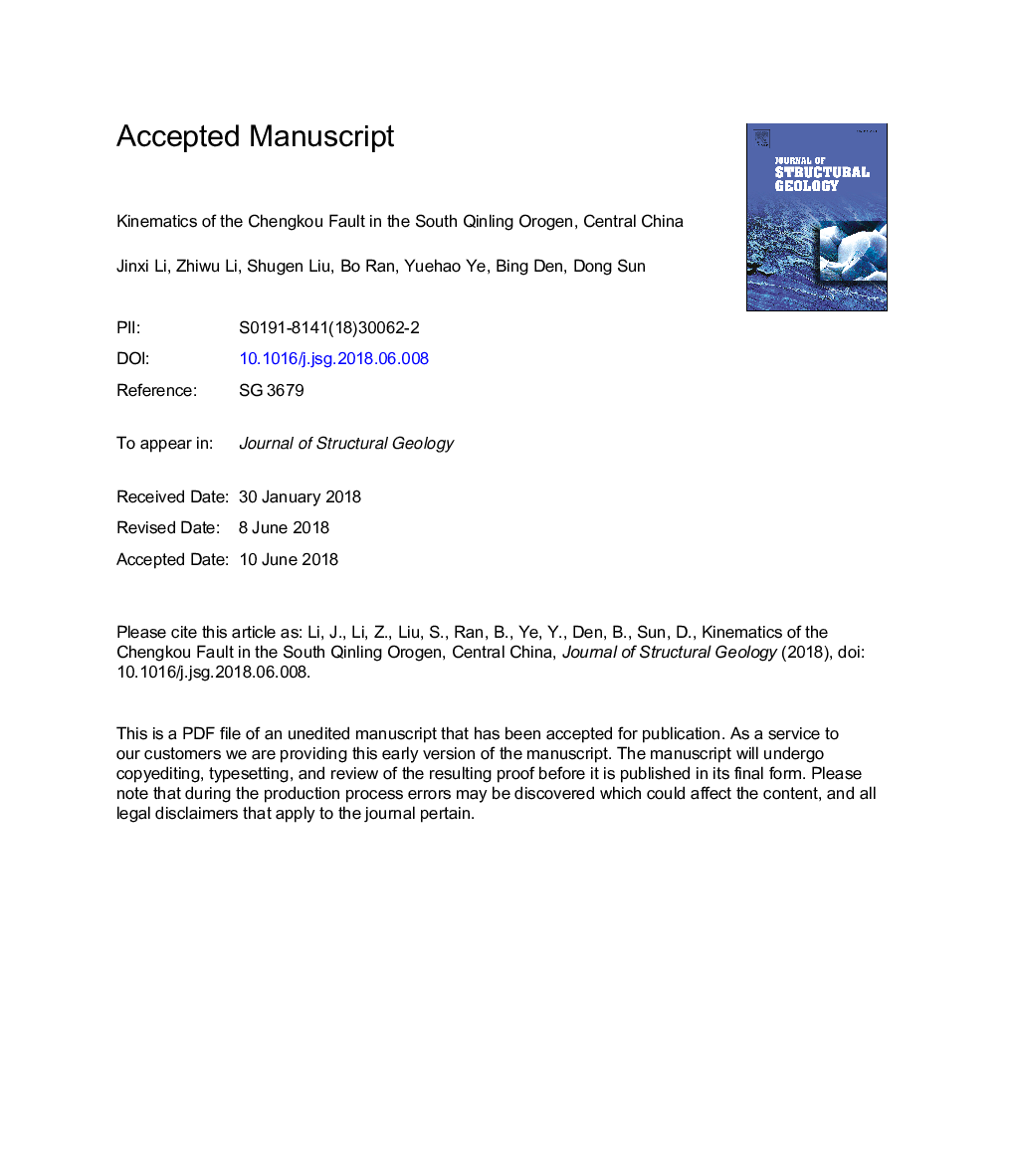| کد مقاله | کد نشریه | سال انتشار | مقاله انگلیسی | نسخه تمام متن |
|---|---|---|---|---|
| 8914359 | 1640466 | 2018 | 33 صفحه PDF | دانلود رایگان |
عنوان انگلیسی مقاله ISI
Kinematics of the Chengkou Fault in the South Qinling Orogen, Central China
دانلود مقاله + سفارش ترجمه
دانلود مقاله ISI انگلیسی
رایگان برای ایرانیان
موضوعات مرتبط
مهندسی و علوم پایه
علوم زمین و سیارات
زمین شناسی
پیش نمایش صفحه اول مقاله

چکیده انگلیسی
Every orogenic belt is marked by a fault system, the nature of which depends on the orogenic processes and formation mechanisms at play. The Chengkou Fault separates the Qinling Orogen from the Yangtze Block and played an important role in the formation of the arcuate Dabashan fold-and-thrust belt. Therefore, it is a very good place to improve our understanding of plate collisions and intra-continental orogenies. We collected detailed field data along the Chengkou Fault to clarify its structural features and develop a reconstruction of the Dabashan fold-and-thrust belt. Based on our study and previous studies, we believe that the Chengkou Fault experienced complex deformations, in at least three stages, before the Cenozoic. The Chengkou Fault first developed as a normal fault with some curvature on the passive continental margin of the Yangtze Block during the Early Paleozoic. NEE-directed compression related to the collision of the North China and South China plates during the Triassic resulted in the Chengkou Fault being thrust southward. With the development of curvature on the Chengkou Fault, sinistral strike-slip movement on its eastern segment and dextral strike-slip movement on its western segment gradually appeared. The fault was reactivated under a NNW-directed compressive stress field during the following intracontinental orogeny, which spanned the Late Jurassic and Early Cretaceous. The obvious decrease in the plunge angle of the fold hinge as one moves east along the fault, as well as a few strike-slip indicators on the eastern segment of the Chengkou Fault, reveal that both reverse and dextral strike-slip components occur on the western segment, while the reverse movement progressively dominates the eastern segment. This change may be attributable to the increasing angle between the regional compressive stress and the Chengkou Fault.
ناشر
Database: Elsevier - ScienceDirect (ساینس دایرکت)
Journal: Journal of Structural Geology - Volume 114, September 2018, Pages 64-75
Journal: Journal of Structural Geology - Volume 114, September 2018, Pages 64-75
نویسندگان
Jinxi Li, Zhiwu Li, Shugen Liu, Bo Ran, Yuehao Ye, Bin Deng, Dong Sun,